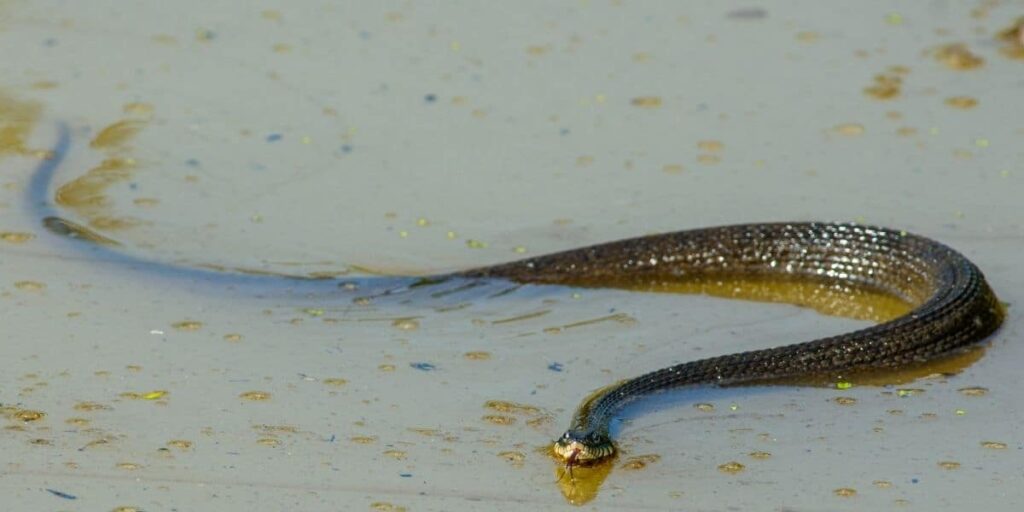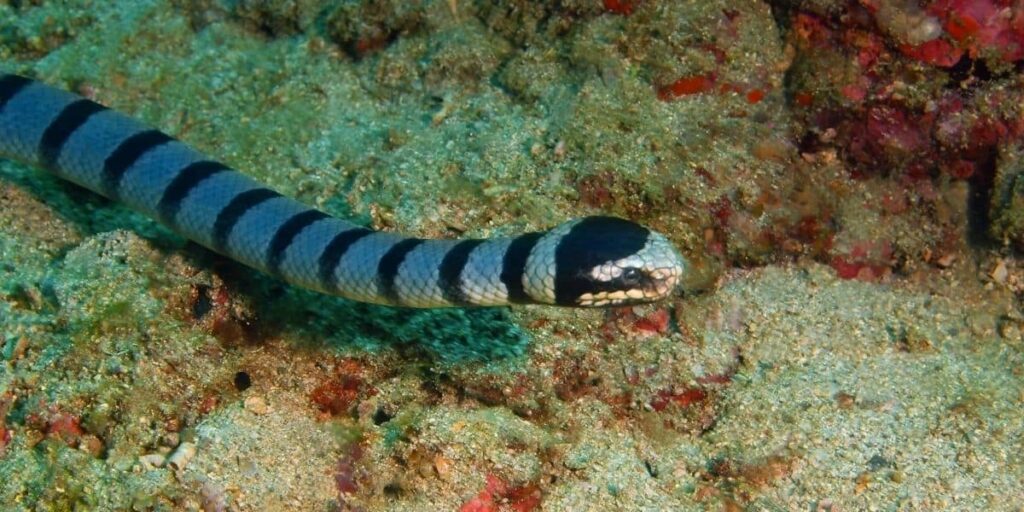More often than not, when we see snakes, we see them on land. So this may cause you to pose the question of whether snakes can swim. Of course, there are also sea snakes that and aquatic snakes that live in and around the water; but does this mean that all snakes possess aquatic abilities? The answer might surprise you.
Regardless of whether they are land or water-based, all snakes are able to swim to some degree. That being said, there are some species that are far more adept in the water.
In this article, we are going to be looking at how well snakes can swim, where you might find them and how different species compare to one another when it comes to getting active in the water.
Can All Snakes Swim?
In short, every type of snake possesses some ability when it comes to swimming but of course, those who are classed as water snakes will naturally be a lot better at this activity.
It may surprise you to learn that there are a vast number of snakes that fall into the category of water snake including the common water snake, the banded water snake and the brown water snake. Many of these animals are found across North America, as far up as Quebec and as far south as Mexico.
However, many land-dwelling snakes are also happy to get into the water and these include pythons and the notoriously deadly brown snake which is commonly found in Australia, parts of Indonesia and now in Guam where it was accidentally introduced in the 1940s and 1950s.
How Do Snakes Swim?
One of the most interesting thing about our slithery friends is the way that they swim. Most animals would make use of arms, legs or fins when swimming but snakes are just one long body – so surely that is not conducive with swimming.
The opposite is, in fact, true. When you see a snake swim, it is quite unlike anything else you have ever seen. these incredible animals move their entire bodies in a lateral motion, forming something akin to an S shape and propelling themselves through the water.

You might compare this to how they move in a similar way when traversing across land. It is those powerful muscle that run the length of the snakes body that are responsible for its agility both in and out of the water.
But what is most surprising is that despite moving laterally, the snake will move forwards in the water. This is because they will begin the movement from the head and this travels down the snakes body, all the way to the tail.
As the motion continues, it causes a backwards force in the water and this pushes the animal forwards.
Land Snake vs. Water Snake – Who Is The Better Swimmer?
When we look at the difference between a water snake and a land snake, we can see that their anatomy differs slightly, making the water snake far more adept at swimming.
It is important to note that land snakes and water snakes do swim in a similar manner but the difference lies in the shape of their body.
A water snake is usually much flatter on its sides and this is perfect for moving quickly and efficiently through the water. For this reason, the water snake will always have an edge over his land-based counterpart.
How To Tell A Land Snake From A Water Snake
One of the things that might cause concern for snake-fearing humans is that since water snakes, aside from those found in the sea, are non-venomous, whereas many of their land-based cousins are.
This can make people afraid to get into the water for fear of bumping into a land-dwelling snake who has taken a dip.
Fortunately, there is a way to tell if a snake is a water-snake or a potentially dangerous land snake. Water snakes are designed for an aquatic life and so can typically be found swimming along the bottom of a river, lake or pond.
Conversely, the land snake will usually swim near the surface of the water, oftentimes, you will see them with their heads poking out of the water allowing them to breathe.
Sea Snakes
The ocean has an unfortunate reputation of being one of the most dangerous places on the planet, and in many respects this is true; it is filled with dangerous animals and currents that could sweep you away in seconds. But one thing that many people fear is the sea snake, but are these animals harmful?
Interestingly, sea snakes are one of the most venomous types of snake in the world. They are usually found in Pacific waters and in the Indian ocean so you’re not likely to bump into one unless you are in these areas.
Sea snakes are actually members of the cobra family and there are as many as 50 varieties of sea snake.

The particular species of sea snake will determine how poisonous it is but as a rule, you should avoid interacting with these beautiful creatures and simply admire them from afar.
The most poisonous species of sea snake is the beaked sea snake and it is thought that as little as a few drops of their venom would be enough to take a man down.
However, they are also known to have very small fangs that would not be able to bite human easily. Phew! Furthermore, they are relatively placid snakes and don’t tend to bite unless they feel threatened.
Conclusion
Snakes are diverse creatures and one of the most interesting things about them is their ability to swim. This is regardless of whether they are a land snake or a water snake.
However, whilst all types of snake tend to swim in the same way, moving their bodies in a lateral motion to propel themselves forward through the water, the water snake’s body is built different to allow it to swim more efficiently.
Water snakes, with the exception of sea snakes, are not poisonous whereas many land snakes are dangerous to humans. As such, it is important to look at where in the water the snake swims as this will help you to determine where it has come from and whether it is dangerous.
- Are Garter Snakes Friendly? Here’s What You Need to Know
- Ball Python Continually Opening Mouth. Causes and Solutions
- Do Ball Pythons Live Underground? Exploring the Natural Habitat of Ball Pythons
- Do I Need to Mist a Ball Python Tank? A Clear Answer
- Ball Python Body Language: Understanding Your Pet’s Nonverbal Communication



